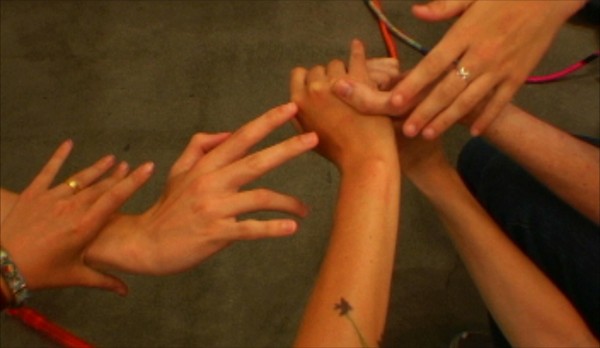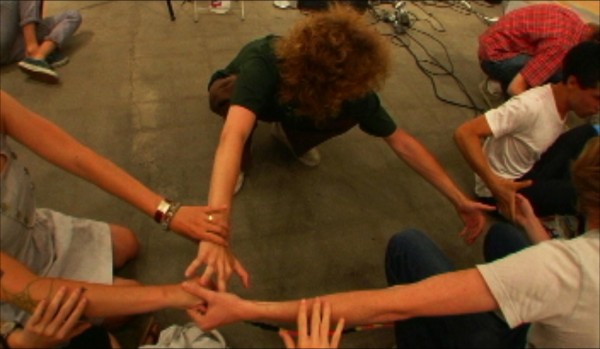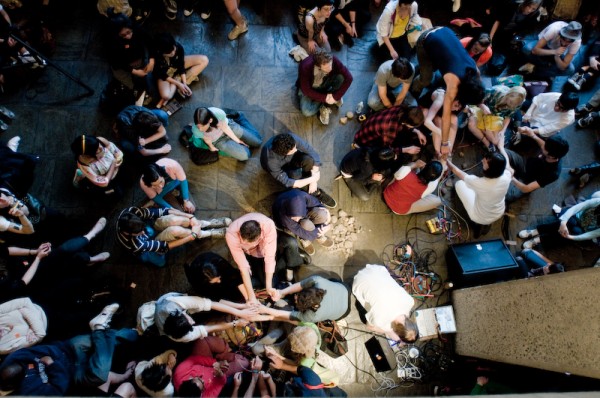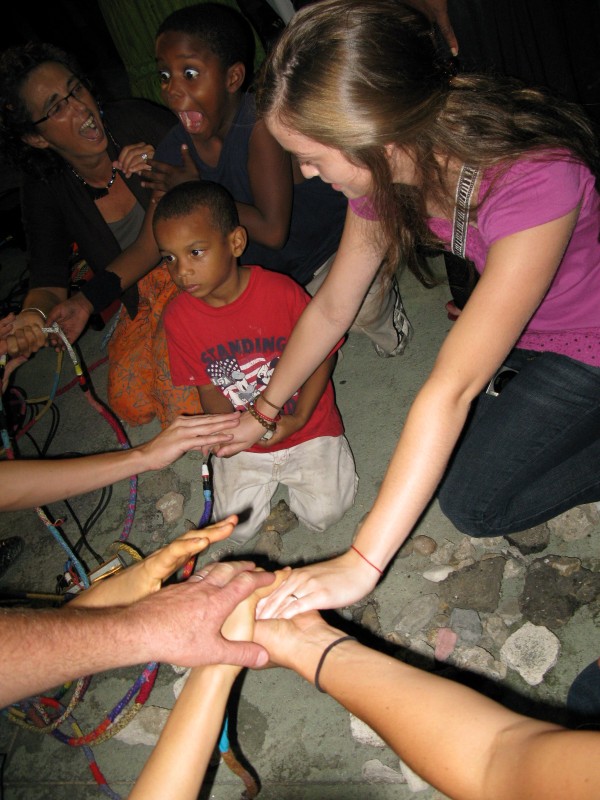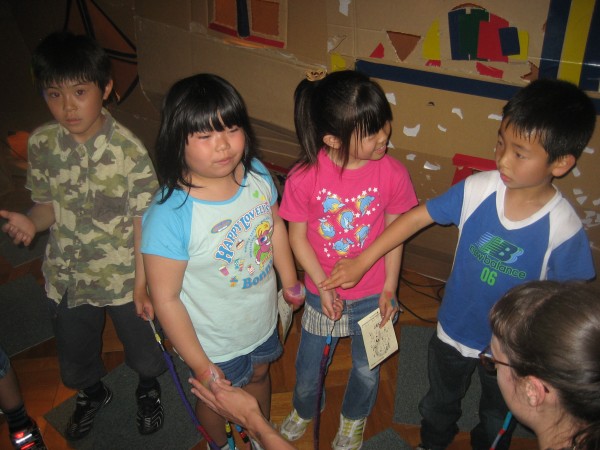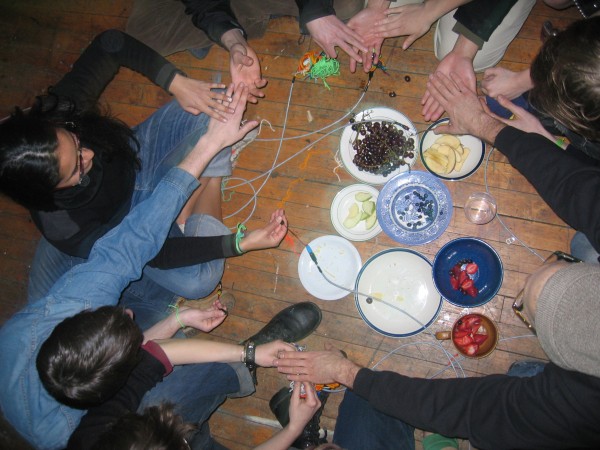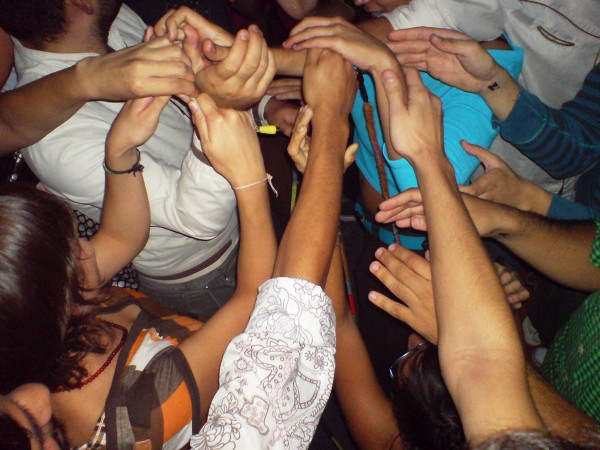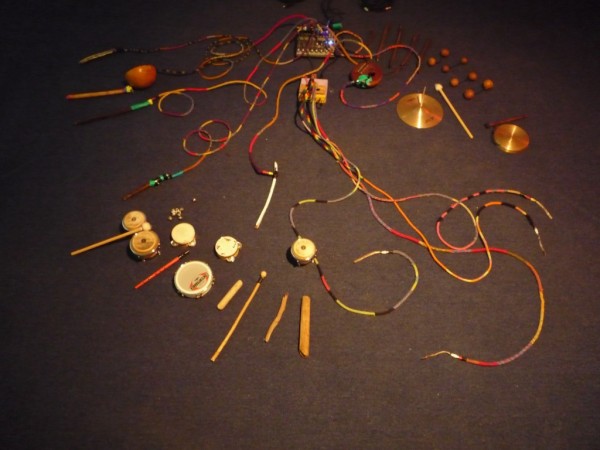“Make a Baby” (2004 – Present) is a synthesizer played by two or more people touching one another on the skin.
How it is implemented—the social structure of the thing—is more slippery, highly contingent on context and audience participation. Our intention, and our measure of quality when comparing one version of “Make A Baby” to another, is to sustain a social space that has no fixed center, and yet forms a cohesive, purposeful sense of belonging to a group engaged in common action. From this essential balance, we can extract other criteria for success: each individual gesture should be perceptible within the group effort (a sense of transparency and agency); the boundaries of the group should be highly permeable—participants can easily shift from active (playing) to passive (listening or watching) engagement; the actions required for participation should be easily taught on a peer-to-peer level. Overall, there should be a sense of continuous playfulness that invites cooperation and innovation.
To these ends, the supporting technology provides unexpected possibilities for distributed control—every point of contact between participants generates some perceptible and significant change in the sound. The software component, with an architecture similar to that of a scalar network analyzer, learns about the structure and quality of connections between distributed nodes. As each signal, carrying a signature frequency, is passed between players, momentary networks are built and dissolved. The forms of these networks, when translated into sound, provide a shifting map of our engagement, the inter-penetrating sum of our individual actions.
Although the two primary modes in which one interacts with this piece are listening and touching, it is easy to describe the experience visually—the shapes made by a group of people finding points to connect across a room, a physical network of hands and arms, attention divided between so many simultaneous points of action. There is a vibrant relationship between the centers (every point of contact that seizes control for an instance) and the margins (frontiers and boundaries, a perimeter with global perspective). In terms laid out by Pauline Oliveros, it is experienced through “focal attention” (points of contact), and “global attention” (the result of all points of touch together). Does this vibrant oscillation, this quick mobility between individual and collective engagement, bring with it a certain awareness? At the very least, there is evidence of the possibility for communicating amongst ourselves directly, supplementally, the complex and ineffable experience of being an individual within a group.
View / Download “Make a Baby: Touch-mediated Interaction” as PDF (244 KB)
